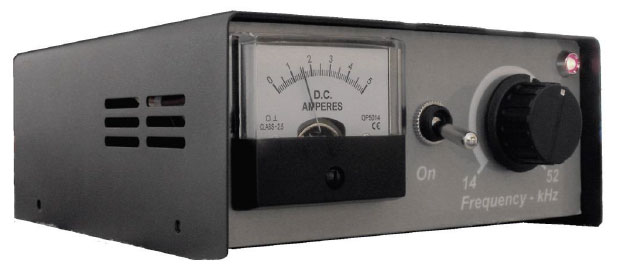ANOTHER KITCHEN TABLE PRODUCTION

HOW THIS PROJECT CAME TO BE
I have three major scientific interests; collecting fine mineral specimens, collecting refined chemical elements and electronics. Occasionally my scientific interests collide, and the flyback driver is the result of such a collision.
Collecting highly refined chemical elements is great fun, but full of frustration as only an element collector would know. Most elements display well. They can be interesting liquids like Mercury or Bromine, beautiful metals like Copper, Silver and Gold or the elemental gases. The problem with a tube full of gas is that it looks about the same as if it were empty. Luckily, elemental chlorine does have a distinct greenish-yellow hue, but hydrogen, nitrogen, oxygen and the noble gases are “invisible” under normal conditions. However, if you expose a gaseous element to a high frequency AC source under the right conditions the gas will glow, displaying a colour characteristic of the element. It is a phenomenon you may have seen demonstrated in undergraduate physics classes using a “spectrum” tube and a High Voltage DC source of power. My needs required something different to a traditional spectrum tube. My requirements were three-fold; first the gas must be at low pressure (10-100 Torr) in a sealed borosilicate glass test tube of reasonable size, and second, there must be no internal electrodes, and third I must excite the gas through about 1 cm of clear polyurethane. So to enhance my element display I needed a source of High Voltage AC. Buying a “reliable” commercial unit is no fun, and often very expensive. I wanted to build a source so I could learn a few new things about High Voltage AC circuits too.
After researching the topic thoroughly, I decided to build a driver rather than a HV AC supply. With a “driver” I could experiment with many different styles of high ratio step up transformers and flybacks without being restricted to just one. To see first-hand the effects ofvarying the frequency of a HV AC source on the glow discharge of low pressure elemental gases I needed a circuit capable of handling a few amps of current over a wide range of frequencies. The electronic driver chip I eventually chose was the SG3525AN PWM chip. This IC has variable duty cycle and output frequency capabilities. It has a wide operating voltage range of 8 VDC to 35 VDC. It is a very reliable IC with a long history, and it has been used in oodles of hobbyist and commercial designs. It is well described on the Internet, so you have Online help if you need it! It is an inexpensive IC (less than $3AUD) and easily obtained through the normal electronic outlets.on-hand and only bought components or hardware when the need arose. Apart from the banana sockets and plugs the only other hardware purchased for this project was the instrument case. John (Iovine) supplied the high ratio step up transformers - thank you John!

